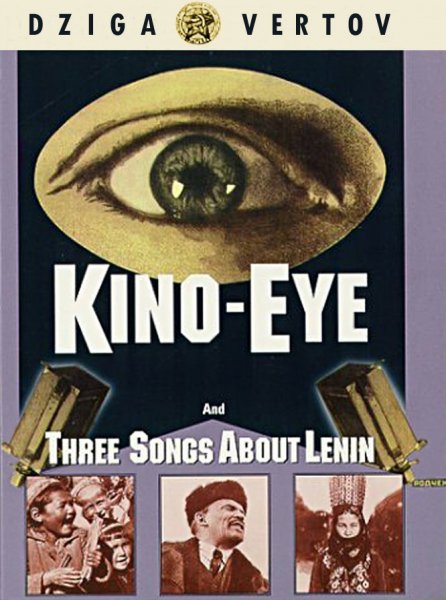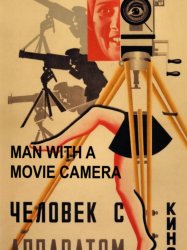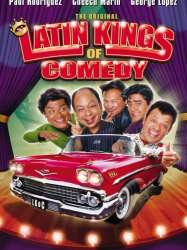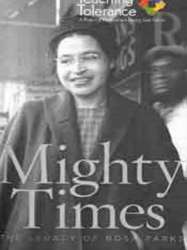Three Songs About Lenin is a russe film of genre Documentary directed by Dziga Vertov released in USA on 6 november 1934
Three Songs About Lenin (1934)
Три песни о Ленине

If you like this film, let us know!
Released in USA 6 november 1934
Length 59minutes
Directed by Dziga Vertov
OriginRussie
Genres Documentary
Rating64%










Trois chants sur Lénine (ou Три песни о Ленине, Tri pesni o Lenine en russe) est un film documentaire soviétique réalisé par Dziga Vertov et sorti en 1934.
Ce film est basé sur la célébration des dix ans de la mort de Lénine et monté à partir de témoignages populaires et d'images d'archives.
Synopsis
La narration est faite par cartons qui prennent tout l'écran dont les phrases sont courtes et directes, qui se manifestent environ toutes les 5 minutes au long du film de manière à tenir le spectateur attentif.Comments
Leave comment :
Suggestions of similar film to Three Songs About Lenin
There are 5 films with the same director, 8973 with the same cinematographic genres, to have finally 70 suggestions of similar films.If you liked Three Songs About Lenin, you will probably like those similar films :

A Sixth Part of the World (1926)
, 1h13Directed by Dziga Vertov
Origin Russie
Genres Documentary
Themes Politique, Political films
Rating71%





Vertov starts by showing us, with intertitles in giant Cyrillic characters, what he sees (Вижу) about the capitalist West with its foxtrot and black minstrels, and then switches his attention to the audience (Вы) and then the individual viewer (Ты). In one self-reflexive moment, Vertov even shows cinema-goers watching an earlier piece of the film (‘And you sitting in the audience’). He takes us on a tour of the vital importance of agricultural production, which generates export revenue (shot of the ship’s nameplate ‘Greenwich’) so that Russia can buy machines to build more machines (shots of a milling machine). This gives him the pretext to take us on a Cook’s tour of the extremities of the Soviet Union: we see the icebreaker Lenin (amazing shot downwards from above the prow) delivering new dogs to the Samoyeds on Novaya Zemlya, and their being invited on board to listen to a gramophone recording of the great man himself. We go to Bukhara where one of the mosques is looking very dingy and crumbled, and to Leningrad where the trams run down the middle of broad empty boulevard as a horse-drawn carriage turns out. We see a Kirghiz with a giant eagle perched on his arm, a bear encircled by yapping dogs, a fox caught in a trap and another one that is a child’s pet, guillemots, gulls, a man shooting a sable in the top of a pine tree, a pine marten, sheep being dragged into the sea for a wash and other sheep being obliged to jump into a stream for the same purpose - the intertitles are surreal: (“You – whether you are washing your sheep in the sea (film) or whether you are washing your sheep in the river (film)…”, We see trappers bringing their furs to the Госторг (Gostorg) trading post in exchange for manufactured goods, everyone contributing to the national economy. Ironically, the furs are destined for the Leipzig fair (ярмаркт). In an amazing stop-frame sequence, rows of oranges align themselves in a packing box, wadges of packing material shuffle along and jump on top of them, and then the lids close (you can just see the line pulling one of the sides). We see coke being quenched also, as well as electricity pylons and insulators, and the village electricity co-op. We see sturgeon being hoiked out of tanks to make caviar. We see barrels of butter – 'it is yours!' We see wheat being threshed, linen being spun and cotton being ginned. We see the country being modernised, although there are still some people who trust in Mohammed (film) or Christ (a man telling his rosary) or Buddha (film) and we are shown a Siberian shaman looking remarkably like a North American Indian, and even a reindeer being slaughtered (by axe blows to the neck) as a sacrifice. We see crowds of women in full-face veils, but also a modernising country as a woman lifts her veil. And we see some tundra-dwellers eating raw reindeer meat.

Lullaby (1937)
Directed by Dziga Vertov
Genres Documentary
Themes Documentary films about politics, Political films
Rating67%






Directed by Dziga Vertov
Genres Documentary
Themes Documentary films about politics, Political films
Rating56%






Enthusiasm (1930)
, 1h5Directed by Dziga Vertov
Origin Russie
Genres Documentary
Rating67%





Les premiers plans montrent des plans de croyants se signant devant une église et ses icônes juxtaposés à ceux d'ivrognes gisant dans la rue. Puis des masses laborieuses se dirigent vers une église, abattent les croix et coupoles et évacuent les icônes. Elles les remplacent par des étoiles rouges.

Man with a Movie Camera (2012)
, 1h20Directed by Dziga Vertov
Origin Russie
Genres Drama, Documentary
Themes Films about films
Actors Mikhail Kaufman
Rating82%





Une journée de la vie quotidienne à Odessa: un opérateur filme, une monteuse visionne ses images, des spectateurs regardent le film qui est fait.
 , 1h26
, 1h26Origin USA
Genres Thriller, Comedy, Documentary
Themes Films about music and musicians, Documentary films about music and musicians, Documentaire sur une personnalité, Musical films
Actors George Lopez, Cheech Marin, Alex Reymundo, Paul Rodriguez
Rating66%






Open Hearts (2002)
, 1h53Directed by Susanne Bier
Origin Danemark
Genres Drama, Documentary, Romance
Actors Mads Mikkelsen, Sonja Richter, Nikolaj Lie Kaas, Paprika Steen, Ulf Pilgaard, Ida Dwinger
Rating74%





Cecilia et Joaquim, jeune couple d'amoureux, sont sur le point de se marier quand Joaquim est renversé par une voiture. Le diagnostic des médecins est sans appel : le jeune homme restera tétraplégique. Cecilia se prépare à affronter l'avenir avec son mari paralysé. Mais ce dernier sombre dans la dépression et préfère couper les ponts. De son côté, Marie, mariée depuis quinze ans et mère de trois enfants, est rongée par un sentiment de culpabilité : elle conduisait la voiture responsable de l’accident. Elle demande alors à Niels, son mari médecin, de se rapprocher de soutenir la fiancée de Joaquim pour la soutenir dans cette épreuve.

My Left Breast (2002)
Genres Documentary
Themes Medical-themed films, Films about sexuality, LGBT-related films, Documentaire sur l'homosexualité, Documentary films about health care, Films about cancer, LGBT-related films, LGBT-related film, Lesbian-related films
Rating68%






My Four Children (2002)
, 53minutesOrigin Israel
Genres Documentary
Themes Films about adoption, Films about children, Films about families, Documentaire sur une personnalité, Films about disabilities
 , 40minutes
, 40minutesDirected by Robert Houston
Origin USA
Genres Documentary
Themes Documentary films about historical events, Documentary films about politics, Political films
Actors Nick LaTour
Rating78%





 Connection
Connection